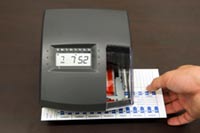 Managing payroll for multiple companies is a big task. And the more locations you manage the bigger task it becomes. Whether it’s paying employees, managing employee information, running reports by location, or the multitude of other payroll functions you must handle for multiple locations, you need a way to stay organized, accurate, and timely. Here are some ways your payroll software can help.
Managing payroll for multiple companies is a big task. And the more locations you manage the bigger task it becomes. Whether it’s paying employees, managing employee information, running reports by location, or the multitude of other payroll functions you must handle for multiple locations, you need a way to stay organized, accurate, and timely. Here are some ways your payroll software can help.
Unlimited Companies
If you manage the payroll for multiple companies, it’s crucial for you to have the ability to keep track of them separately. Many payroll systems allow for just one company, some have a limit for the number you can manage within the system and others allow for unlimited companies. Due to the variations in payroll systems, be sure you choose a system that can grow with your company and handle all of the different companies for which it manages payroll.
Track Data by Location, Department, Project, etc.
Tracking the payroll data for different companies can be a helpful tool. For instance, maybe you want to compare the labor costs by department or by location. Setting up and tracking that information in your payroll system makes it easy to pull reports at any time to do the comparisons you require.
Direct Deposit with Publish Pay Advice
Managing the payroll for multiple companies means you may not be near enough to some of the companies to deliver physical pay checks to employees. This issue can be solved by paying employees via direct deposit, and delivering their pay advice or ‘stub’ electronically via e-mail and that is accessed securely on the internet. This eliminates the need to print anything at all, which also saves money on paper, ink, time stuffing envelopes, and more.
Multiple State Tax Filing
Having multiple companies typically involves employees in multiple states, and therefore you must be certain your payroll software can handle that, since not all systems do. The best way to be sure your system processes multiple state tax filing, is to implement a system that can handle the tax forms for all 50 states! Even if you don’t require it now, chances are you will down the line.
Import Time Electronically
To streamline the entry of pay for multiple companies, importing time directly from an electronic source can be helpful. A digital time clock, for example, allows you to import the time and populate the hours directly into your payroll software program, reducing errors by eliminating the double entry of information. Other ways to capture time include hand-held time capture devices and online time entry.
Customized Reports
No two businesses are alike, and that’s why each business has its own way of running reports. With different companies, the ability to run reports the way each company desires can be extremely helpful. Customize payroll reports to the exact specifications each company chooses, and then save and name them for easy access whenever you want to run them.
Check Designer
Each company’s payroll likely requires different check designs or styles. One way to handle this is to use your payroll system’s check designer to create and save appropriate check designs for each company. Many designers will allow you to add, delete or edit fields of information and even add a logo. You can go step further and print checks on blank check stock using MICR encoding. The MICR function also allows you to print a custom signature from a file on pay checks, especially helpful in the case where the person signing is not always nearby or available to sign pay checks.